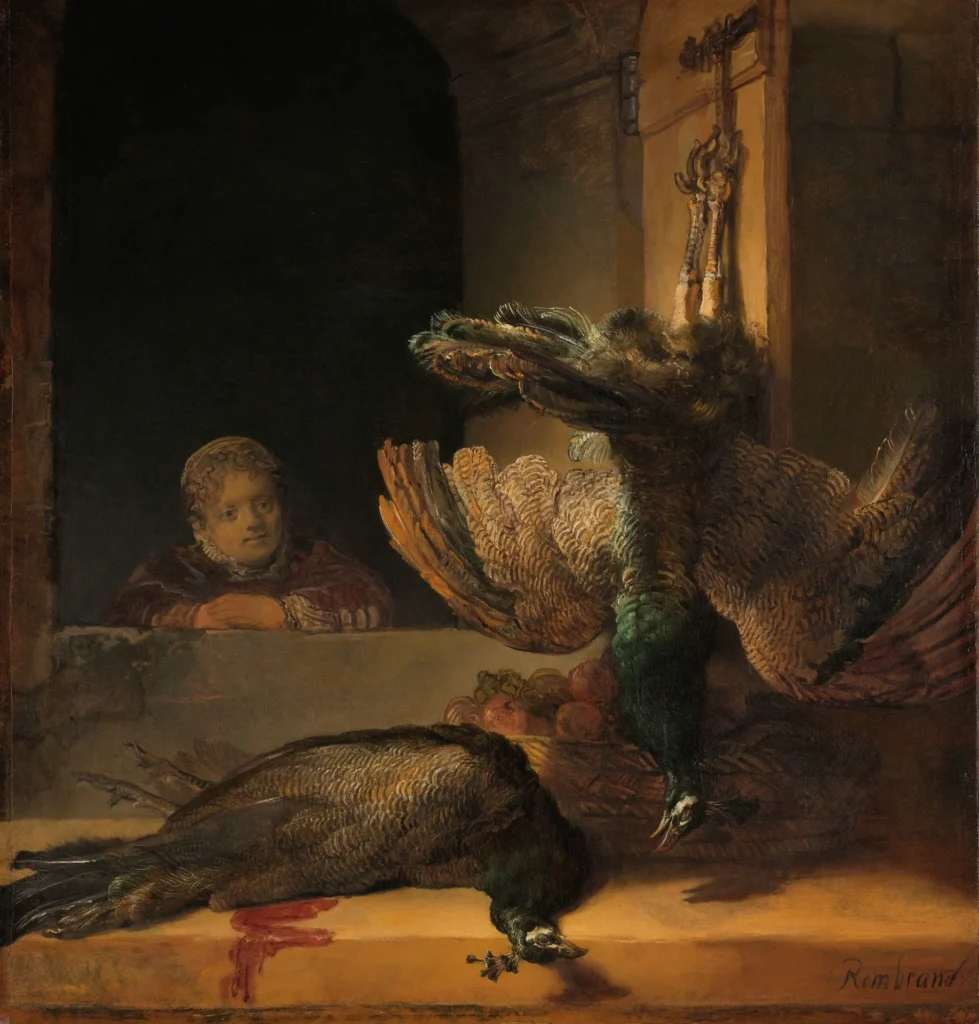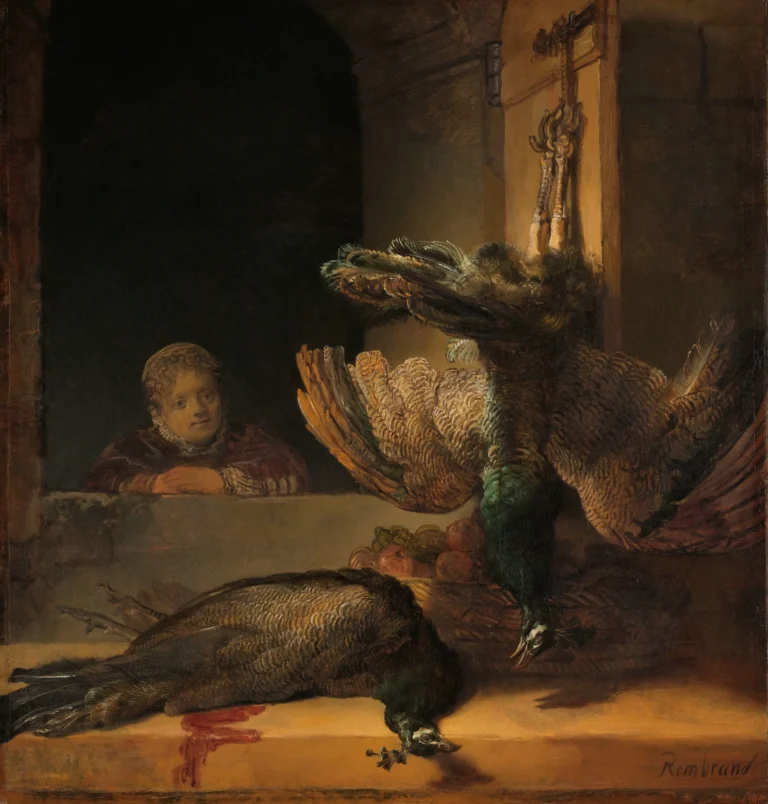Still life with peacocks
Although Rembrandt van Rijn is celebrated primarily for his portraits and historical scenes, he created a rare still life depicting life-sized peahens that highlights his exceptional skill in capturing realism. This masterpiece employs dynamic chiaroscuro techniques, enhancing the three-dimensionality of the birds, suggesting their vibrant presence within the composition. While this painting is not centered on peacocks, its detailed portrayal reflects Rembrandt's innovative approach to still life. Despite his limited work in this genre, this piece is notable for its lifelike qualities, enriching the understanding of Rembrandt's artistic versatility.
17th Century
About the Artwork
The story behind Rembrandt's still life painting featuring peahens illustrates his innovative approach to exploring everyday subjects. Created during the 17th century, this artwork reflects the artist's profound understanding of light and shadow—hallmarks of his style. Unlike the more common representations of fruits or flowers, the choice to depict birds lends an air of sophistication and curiosity to the piece. Rembrandt's use of chiaroscuro not only brings depth to the composition but also invites viewers to experience the beauty of ordinary life through his eyes, showcasing moments often overlooked. As the sole example of his painted still life, this artwork signals a turning point in his career, allowing for a brief yet fascinating glimpse into his diverse artistic explorations.
Did You Know
Rembrandt is renowned for his ability to manipulate light and shadow, a technique known as chiaroscuro. This painting exemplifies his skill, using dramatic contrasts to create volumetric forms, making the peahens appear almost lifelike.
This still life is a rare example of Rembrandt’s work in a genre he largely eschewed in favor of portraits and history paintings. Its existence demonstrates his proficiency across various styles and themes within the art world.
Rembrandt’s techniques in this still life influenced countless artists, prompting future generations to explore realism and light in still life compositions, paving the way for modern interpretations in art.










